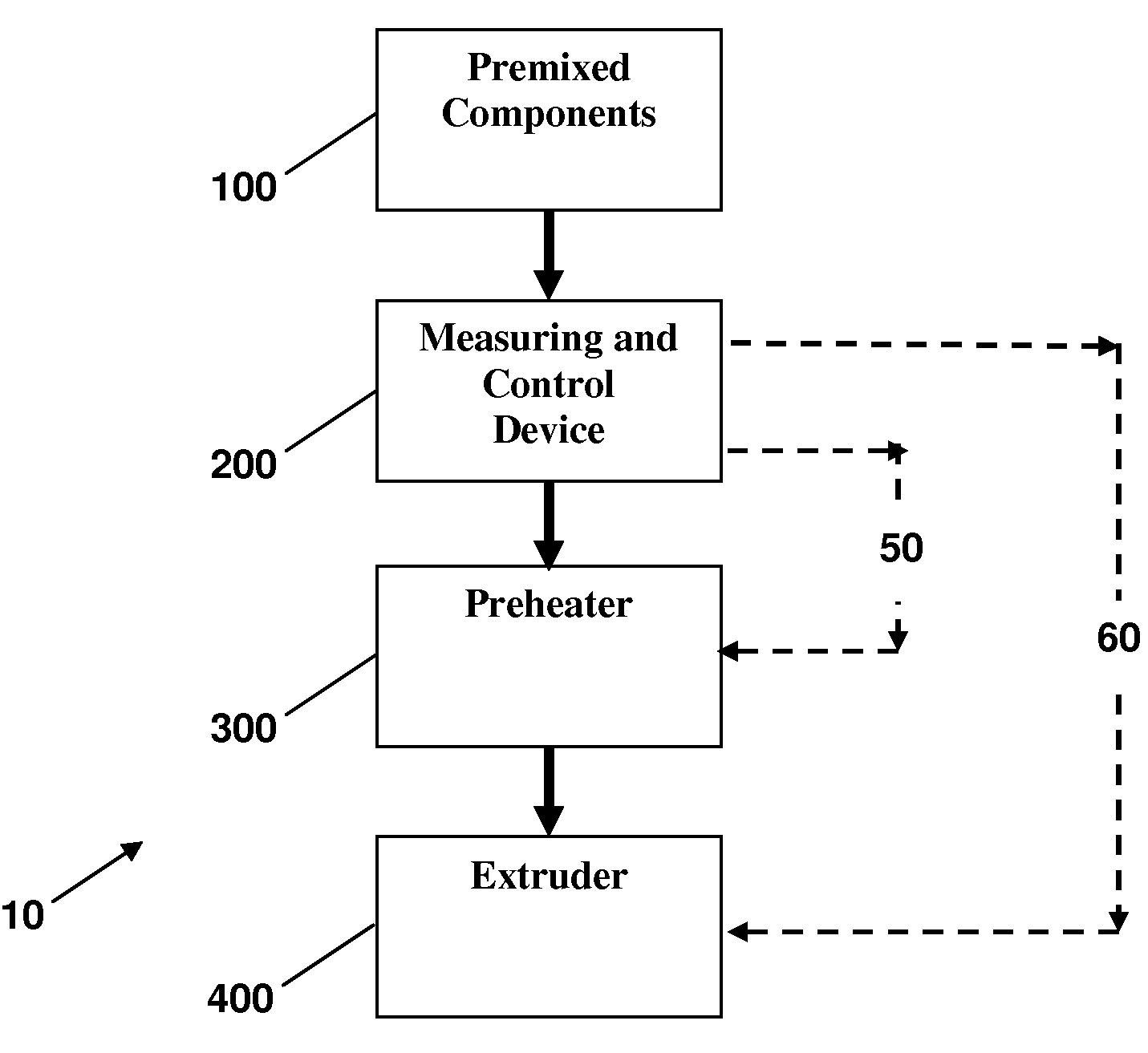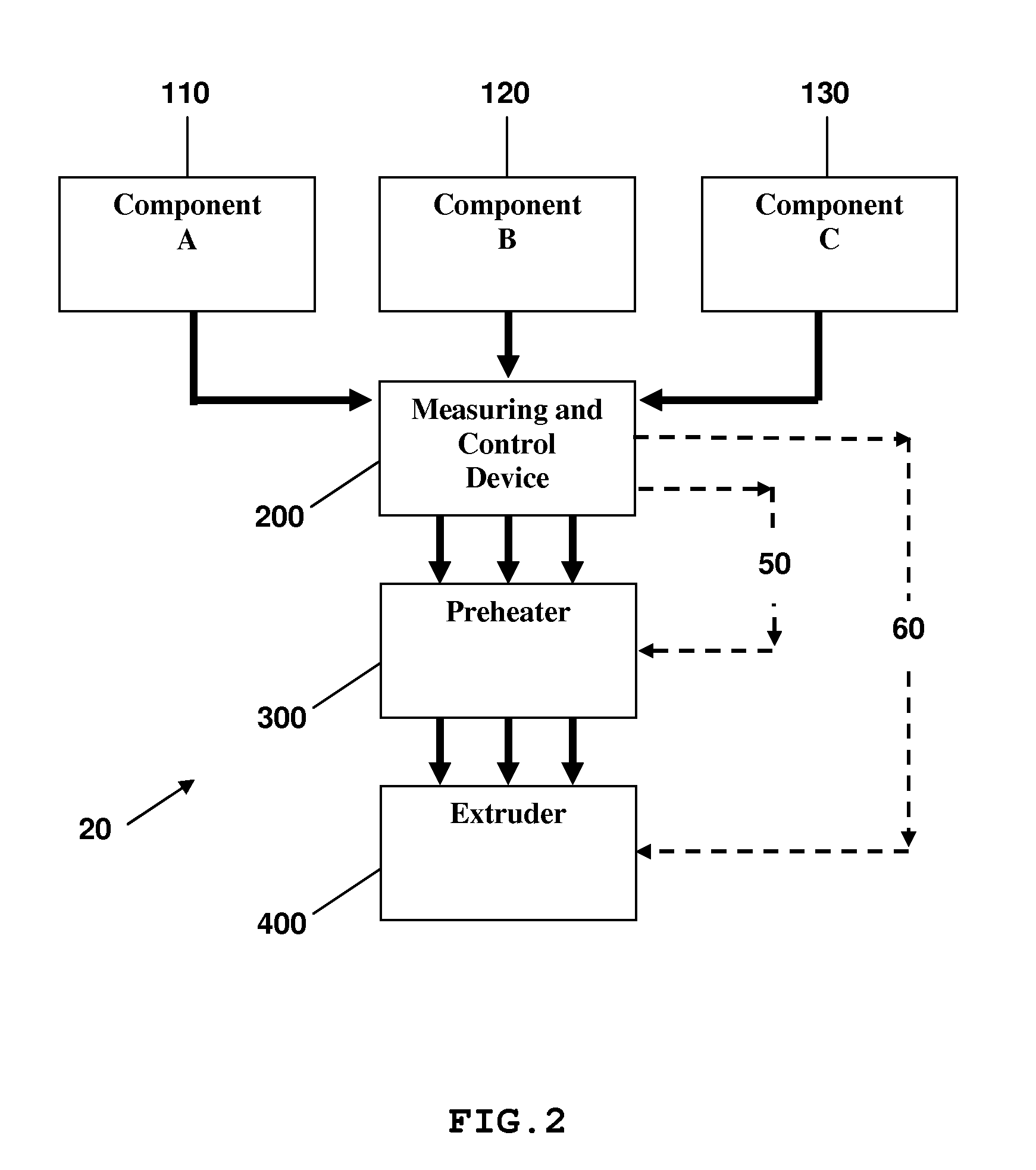System and method for manufacturing composite materials having substantially uniform properties
a composite material and substantially uniform technology, applied in the field of composite products, can solve the problems of lack of durability and appearance degradation when exposed to the environment, loss of pleasing aesthetic appearance, and limited life of traditional wood surface treatments such as paint or lacquer, and achieve the effects of limited life, significant expense over time, and lack of durability
- Summary
- Abstract
- Description
- Claims
- Application Information
AI Technical Summary
Benefits of technology
Problems solved by technology
Method used
Image
Examples
Embodiment Construction
)
[0009]FIG. 1 illustrates an example of system 10 of the present invention. Selected premixed composite material components 100 of the desired composite material are introduced to a measuring and control means, such as device 200, which first measures the quantity of components 100 being processed. Examples of components 100 may include a thermoplastic resin and a cellulosic filler material, such as polyethylene and wood flour, respectively. Another example of components 100 may include a thermoplastic resin and a cellulosic filler material, such as polyvinyl chloride and wood flour, respectively. Numerous other materials are also available for manufacturing composites. The measuring and control device 200 subsequently produces an output control signal that may communicate with a means to preheat the composite material components, such as a preheater 300 via a control path 50 and / or with a means to form the desired final product, such as an extruder 400 via control path 60 to active...
PUM
| Property | Measurement | Unit |
|---|---|---|
| thermoplastic | aaaaa | aaaaa |
| electrical | aaaaa | aaaaa |
| chemical | aaaaa | aaaaa |
Abstract
Description
Claims
Application Information
 Login to View More
Login to View More - R&D
- Intellectual Property
- Life Sciences
- Materials
- Tech Scout
- Unparalleled Data Quality
- Higher Quality Content
- 60% Fewer Hallucinations
Browse by: Latest US Patents, China's latest patents, Technical Efficacy Thesaurus, Application Domain, Technology Topic, Popular Technical Reports.
© 2025 PatSnap. All rights reserved.Legal|Privacy policy|Modern Slavery Act Transparency Statement|Sitemap|About US| Contact US: help@patsnap.com



